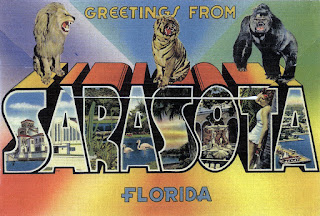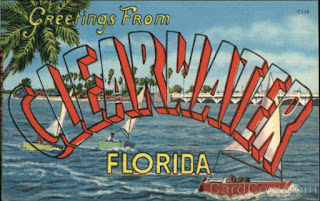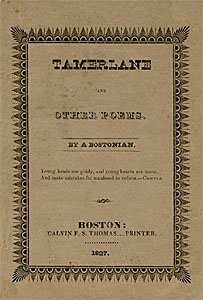Nancy Pickard is a U.S. crime novelist. She has won five Macavity Awards, four Agatha Awards, an Anthony Award, and a Shamus Award. She is the only author to win all four awards. She also served on the board of directors of the Mystery Writers of America.
I don't remember exactly when I met Nancy Picard, sometime in the early 90's is my guess. That was when I began to first be published and Elmer & I opened our mystery bookstore in Austin in 1990. I remember she & both were very early members of Sisters in Crime and Nancy is a past National President of S-in-C. I do know I've always admired her mystery novels. Reading Nancy's books are like peeling an onion back to add to the story and destroy your early guesses. Naturally, you must keep turning pages and peeling layers until you get to the end & the solution.
When I read this article about Nancy's book: Seven Steps on a Writer's Path, I knew I wanted to share this information with all of you. Her book is available in both Paperback & Kindle formats. Page numbers refer to the trade paperback edition. — Jan Grape
As Nancy Pickard looked back over her own career and that of her many writer friends, she saw herself and most of them struggling through stages of unhappiness, of wanting, of commitment, of wavering, of letting go, of immersion, and of fulfillment. It looked very much like a path to her, and it felt true, in the way only actual lived experience does feel.
"And thus was born the Seven Steps on the Writer's Path. At first it was a workshop given by me, then it was a retreat presented by Lynn, and now it is a book written by both of us." p. xii
SEVEN STEPS
by Nancy Pickard
Starting Out
"Writing is a path as full of darkness as it is of light, and so the way ahead is hard to see. There are so many ominous shadows, unpredictable gusts of wind, unexpected blinding shafts of sunlight. It’s easy to get lost, to trip over our own hidden roots, or plunge unaware into unexplored caverns in our psyche. As writers, we hardly ever know where we’re going. The only thing most of us know how to do is to keep putting one foot after the other in the darkness and trust that eventually we’ll get there." p. 1
When Lynn and I each started our own writing careers, we didn’t even know there was a path, much less that there are steps along it. We hope that knowing these things will give you an advantage that writers who came before you didn’t have.
Step One: Unhappiness
"Call this step in the creative process what you will, according to your own experience of it. Name it the 'creative urge,' if you like. Call it an 'itch' or 'creative tension' or 'restlessness' or 'discontent.' Regardless of what label any of us gives this step, it’s a common state and the first step for all of us.
"Unhappiness, to one degree or another, is where all creativity begins." p. 9
What a way to start a book, with unhappiness! But we had to, because that’s where the writing starts… or the drawing… or the music… or any other form of creativity. We discovered early on that the steps in this book apply to any creative person, not just to writers.
Step Two: Wanting
"It sounds so simple. All you have to do is want. But it must not be that simple in real life, or else why wouldn't more people be writing what, where, when, as much, and as well as they want to? Instead, they're still languishing in a state of unsatisfied desire. They're stuck back in step one, Unhappiness, and they can't seem to get out of it, no matter how bravely they face it or how honestly they acknowledge what they want from writing.
"The trouble may be that most of us tend to assume that wanting is only about feeling. Certainly, depth of desire is part of the answer, but what we're missing when we stop there is the second part of wanting, the action part…" pp. 38-39
This chapter required Lynn and me to be excruciatingly honest with ourselves and our readers about what we really want in our lives and our writing. It was good for us. It'll be good for you, too.
Step Three: Commitment
"Some people might joke that writers need to be committed, rather than to have commitment, and sometimes we feel as if we can only agree with them. It’s probably true that we're all at least a little bit crazy. But then, truly committed people usually look a little-or very–crazy to the outside world. If you don't look just a little bit nuts, you’re probably not committed enough. Writers like L. Frank Baum -- whose The Wonderful Wizard of Oz was rejected dozens of times -- who keep sending their manuscripts to publishers look like crazy fools to people who will be only too glad to tell them so." p. 70
Step Four: Wavering
"Wavering tends to arrive when it’s least expected and least welcome. Certainly, you'd never willingly invite it, but surprise, here it is. Such as when you're forty pages into a book and you thought it was going to be smooth sailing from here on out, but now you’re stuck. Or like when you’ve submitted your poems to magazines and you're feeling really good and hopeful about them–and the rejection letters start coming in. Or like when you've arranged to write for a couple of hours every day, and then other responsibilities crop up, just when you thought you had them beat down." p. 103
This is one of those steps where it's truly wonderful to know that you have lots of company. You're not alone. You're not the only crazy one. I'm there with you many days. So is Lynn. So is every writer we know and all of the ones we don’t know. We all waver. We all hate it. We all get through it, one way or another, and having each other's hands to hold is a big help and comfort.
Step Five: Letting Go
"Letting go is the magic moment when you step off into space, trusting that you won't fall on your face. As the philosopher Soren Kierkegaard said, when we make a leap of faith, it is the actual act of stepping out that creates a bridge to see us safely to the other side." p. 137
This is my favorite step of all. I adore this step. This is where miracles happen. This step sometimes terrifies me. A lot of times in my life I have wanted, oh how I have wanted, to take this step, but I just couldn’t do it. And then sometimes I do take it, and oh, the joy of that!
Step Six: Immersion
"… be loyal to your writing. Be just as loyal as you are to your dearest friend or loved one. If your friend or your child really needed your attention, would you let your attention wander? Or would you ignore the telephone, put everything else on hold, and turn fully toward him or her? Your writing deserves that kind of loyalty and attention, too. If you can't or won't manage to show as much loyalty to your writing as you show to your friends and family, we guarantee that while you may experience moments of writing bliss, you'll never experience the satisfaction of going all the way.
"Be loyal." p. 177
It's hard for a lot of people, some women especially, I think, to be loyal to their writing, or even to think of it in that way. They let everything and everybody pull them away from it, as if they couldn't care less. But they do care, we know they do, and they suffer for it. If only they knew, their writing wants their love and attention, too!
Step Seven: Fulfillment
"So we have to ask you: where’s your cart, and where’s your horse?
"Here are some telltale things that writers say that alert us to improper horse/cart placement. You'll have to pardon us if our answers sound a bit jaded; we've heard these more times than you'd care to know: 'Should I copyright it first?' (You should write it first.) 'What if I send a query to several publishers and they all want it?' (You should only have such problems. Just worry about writing it.) 'What if somebody steals my ideas?' (Just write the damned thing. If you're worried about burglars, get a gun.) 'I've written three chapters of a novel. Should I start sending it out to agents now?' (No, you should write Chapter 4 now.) 'I was thinking of sending my poems out now and waiting to do my rewriting after I hear what the editors have to say.' (We're thinking you should rewrite them now, or you will never hear from any editors.)" p. 208
Dare to dream big, we say in this chapter, but keep dreaming small at the same time. Go ahead and visualize your name on a best-seller list, but also visualize yourself writing that next sentence, paragraph, and page.

































